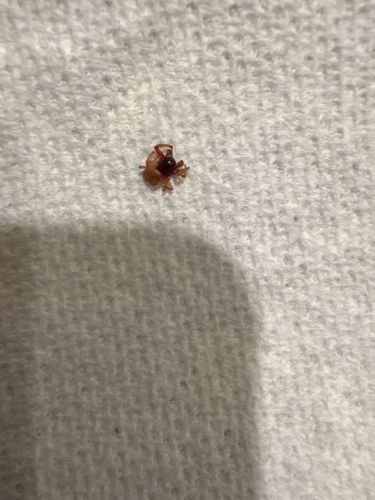Tick (likely an engorged nymph or adult female)
Scientific Name: Too difficult to determine from image alone without specific morphological features (species vary widely, e.g., Ixodes scapularis for blacklegged tick, Amblyomma americanum for lone star tick).
Order & Family: Order: Ixodida (formerly Acarina, part of Arachnida), Family: Ixodidae (hard ticks) or Argasidae (soft ticks). Given the appearance, it is most likely Ixodidae.
Size: Unfed: 1-5 mm; Engorged: up to 10-15 mm (depending on species and life stage, engorged females can be quite large, appearing pea-sized).

Natural Habitat
Wooded areas, tall grasses, brush, leaf litter, and urban/suburban environments where hosts are present. They are often found in areas frequented by their hosts.
Diet & Feeding
Blood (hematophagous) from a variety of hosts including mammals, birds, and reptiles.
Behavior Patterns
Ticks are obligate parasites, meaning they must feed on blood to survive and complete their life cycle. They are typically ambush predators, waiting on vegetation for a host to pass by. Once on a host, they will crawl to find a suitable feeding site, insert their mouthparts, and begin to feed. They remain attached for several days until fully engorged. Ticks undergo four life stages: egg, larva, nymph, and adult, with each active stage requiring a blood meal.
Risks & Benefits
Risks: Ticks are significant vectors of numerous diseases to humans and animals, including Lyme disease, Rocky Mountain spotted fever, anaplasmosis, ehrlichiosis, babesiosis, and Powassan virus. Their bites can also lead to local skin irritation, allergic reactions, and in rare cases, tick paralysis. Benefits: While they pose significant health risks, ticks play a role in ecosystems as a food source for some animals (e.g., birds, opossums) and as part of the natural regulation of host populations.
Identified on: 8/20/2025